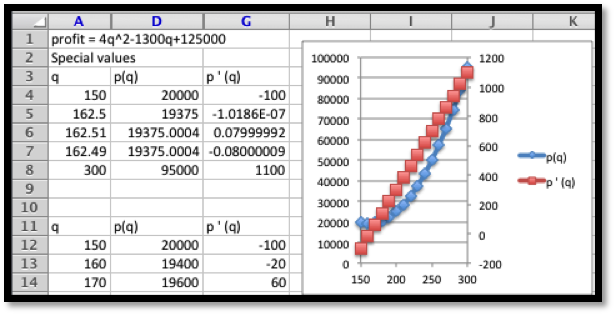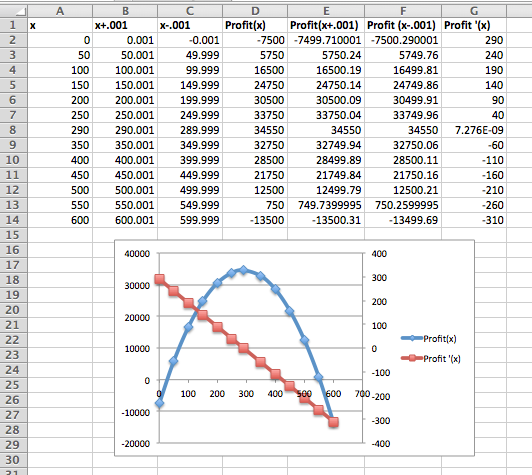Example 3.4.1. Profit function for widgets.
We have determined that the profit function for selling widgets is
\begin{equation*}
\profit(\quantity)=\quantity*(400-\quantity)-5000\text{,}
\end{equation*}
with the function valid on the interval \(0\le \quantity\le 500\text{.}\) Find the minimum and maximum profit in the given interval.
Solution 1. Solution A: without calculus
The first example was chosen because it can be done without using any calculus, so we solve it with easier methods first. The profit function is a quadratic function in quantity, so it is a downward pointing parabola. The location of the vertex is at \(\quantity=200\text{,}\) which we obtain from the coefficients of the quadratic and linear terms. Thus we need to check this point and the two endpoints. Plugging in values, we get \((0,-5000)\text{,}\) \((200, 35000)\) and \((500, -55000)\text{.}\) The maximum occurs when we sell 200 widgets and our profit is $35,000, the minimum occurs when we sell 500 widgets and our loss is $55,000. A relative minimum occurs when we sell 0 widgets and our loss is $5,000.
Solution 2. Solution B: with calculus
We want to set up the problem to be able to graph the profit function and its derivative on the same graph. We will us the calculator approximation of the derivative. As we did in the last section, we set up a worksheet with columns for \(q\text{,}\) \(q+.001\text{,}\) \(q-0.001\text{,}\) \(p(q)\text{,}\) \(p(q+.001)\text{,}\) \(p(q-0.001)\text{,}\) and \(p'(q)\text{.}\) This allows most of the worksheet to be filled in with quick fill.

We then look at the values, and compare the table to a graph. We find the same three candidate points and the same maximum and minimum values.




















